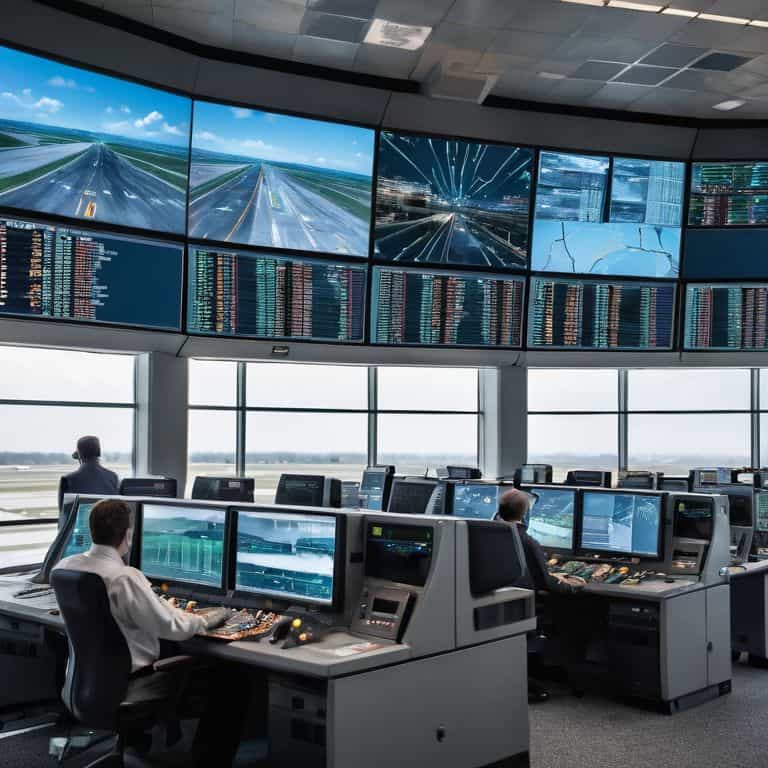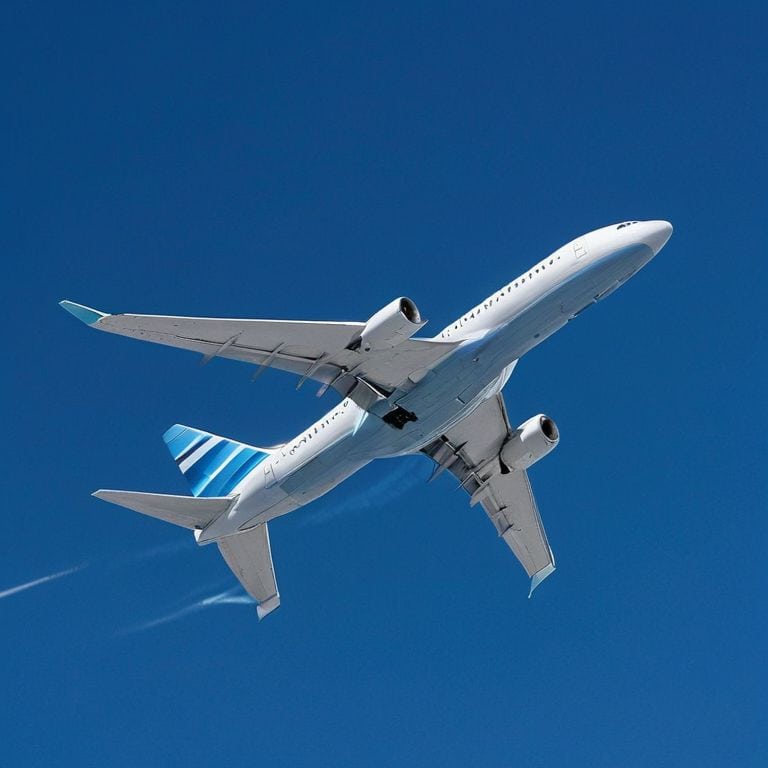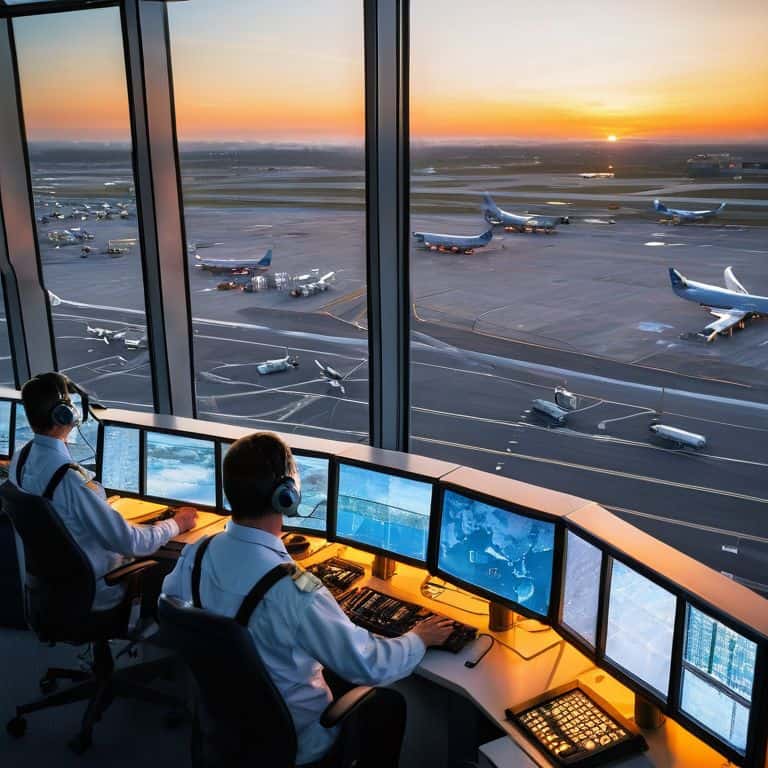I still remember the first time I witnessed a remote air traffic control tower in action – the sheer efficiency and calmness of the operation was a sight to behold. As someone who’s spent years optimizing airport logistics, I’ve grown tired of the hype surrounding certain “innovations” that promise the world but often fall short. When it comes to remote air traffic control towers, I’ve seen firsthand how they can streamline operations and reduce costs, but I’ve also seen how they can be misconstrued as a panacea for all aviation woes.
As I delve into the world of remote air traffic control towers, I want to make one thing clear: my goal is to provide you with practical insights and honest assessments of their potential. I’ll be sharing my own experiences, as well as lessons learned from my work with airports and airlines, to give you a nuanced understanding of how these towers can truly benefit the aviation industry. By the end of this article, you’ll have a clear grasp of the benefits and limitations of remote air traffic control towers, and how they can be effectively integrated into existing systems to create a more efficient and safe flying experience.
Table of Contents
Revolutionizing Skies
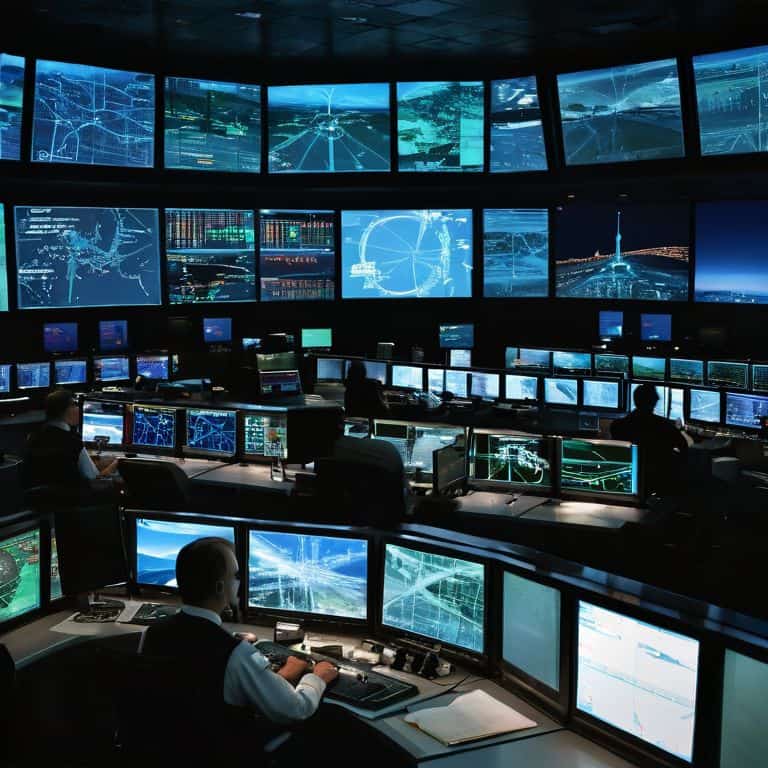
As I delve into the world of virtual air traffic control systems, I’m struck by the sheer potential for innovation. Digital airport infrastructure is being revolutionized, enabling more efficient and safer flight operations. By leveraging advanced technology, air traffic controllers can now manage multiple airports from a single location, reducing costs and increasing productivity.
The benefits of remote tower operations are numerous, with air traffic management software playing a crucial role in streamlining processes. For instance, the Single European Sky initiative aims to create a more integrated and efficient air traffic management system, reducing congestion and delays. By adopting such cutting-edge technologies, the aviation industry can significantly improve its overall performance.
The integration of NextGen air traffic control systems is another significant step forward, enabling real-time data sharing and enhanced situational awareness. This, in turn, allows for more precise and efficient air traffic management, making the skies safer for all. As someone who’s passionate about the intricacies of aviation logistics, I find it fascinating to explore how these advancements are transforming the industry from the ground up, with remote tower operations benefits being a key driver of this change.
Nextgen Air Traffic Control Efficiency
As I delve into the world of remote air traffic control towers, I’m struck by the potential for streamlined operations that can transform the aviation industry. By leveraging advanced technology and real-time data, air traffic controllers can make more informed decisions, reducing delays and increasing the overall efficiency of flight operations.
The implementation of remote towers is also driving the adoption of automated systems, which can help to minimize human error and optimize air traffic flow. This, in turn, enables airports to handle more flights while maintaining the highest standards of safety, making the future of aviation look brighter than ever.
Virtual Air Traffic Control Systems Evolve
As I delve into the world of virtual air traffic control systems, I’m struck by the seamless integration of technology and human expertise. The evolution of these systems has been nothing short of remarkable, with advancements in data analytics and artificial intelligence enabling more efficient and safe flight operations.
The use of real-time data processing has been a significant factor in this evolution, allowing air traffic controllers to make more informed decisions and respond to changing circumstances with greater agility. This, in turn, has improved the overall flow of air traffic, reducing delays and increasing the capacity of airports to handle more flights.
Remote Air Traffic Control Towers
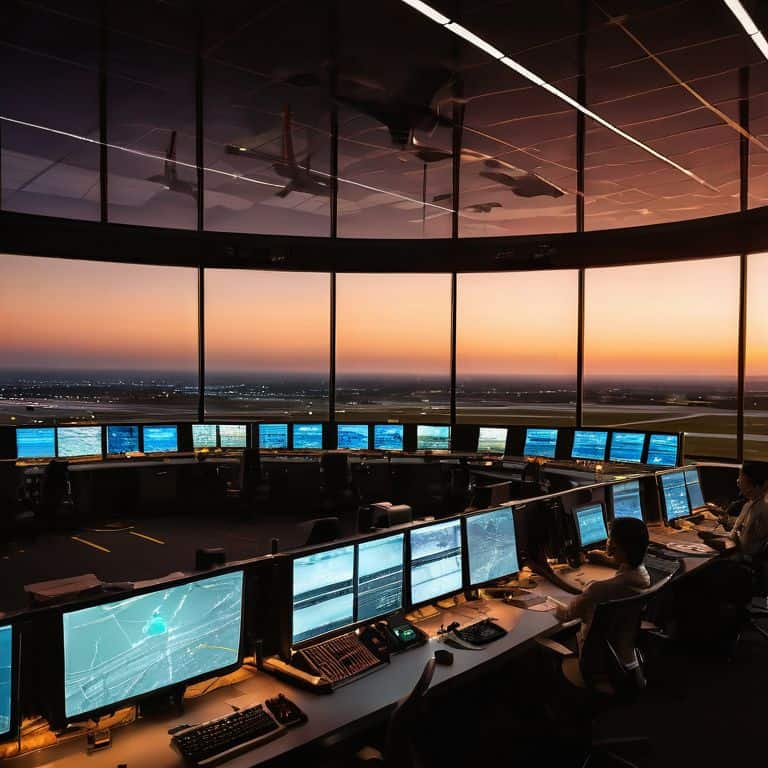
As I delve into the world of virtual air traffic control systems, I’m struck by the sheer potential of remote tower operations benefits. By leveraging advanced technology, airports can now manage flight traffic from a remote location, increasing efficiency and reducing costs. This shift is part of a larger movement towards digital airport infrastructure, where data and software play a crucial role in streamlining operations.
The single European sky initiative is a prime example of how air traffic management software can be used to create a more unified and efficient airspace. By integrating different systems and protocols, air traffic control can be managed more effectively, reducing delays and increasing safety. I’ve seen firsthand how NextGen air traffic control is being implemented in various airports, and the results are promising.
One of the most significant advantages of remote air traffic control is the ability to centralize operations, allowing for more efficient use of resources and personnel. This, in turn, can lead to improved air traffic flow, reducing congestion and decreasing the risk of accidents. As someone who’s passionate about urban planning photography, I appreciate the impact that well-designed infrastructure can have on the overall travel experience.
Digital Airport Infrastructure Takes Flight
As I delve into the world of remote air traffic control towers, I’m struck by the significance of integrated systems in enhancing operational efficiency. The seamless coordination between air traffic control, airlines, and airport management is a testament to the power of innovative design. By streamlining communication and data exchange, airports can optimize passenger flow and reduce congestion.
The introduction of advanced data analytics is another crucial factor in this equation, enabling airports to make informed decisions about resource allocation and infrastructure development. This, in turn, paves the way for more sustainable and resilient airport operations, ultimately benefiting both airlines and passengers alike.
Single European Sky Initiative Success
As I delve into the successes of remote air traffic control towers, I’m reminded of the pioneering work done by the Single European Sky initiative. This ambitious project has been instrumental in streamlining air traffic management across the continent, leading to significant reductions in flight delays and increases in overall efficiency.
The implementation of remote air traffic control towers has been a key factor in the initiative’s success, allowing for seamless coordination between different air traffic control centers and enabling real-time monitoring of flight traffic. This has not only improved safety but also reduced costs for airlines and airports, making air travel more accessible to everyone.
Navigating the Future of Air Traffic Control: 5 Key Insights
- Implementing remote air traffic control towers requires a thorough understanding of digital infrastructure and its seamless integration with existing systems
- Leveraging virtual air traffic control systems can significantly enhance efficiency and reduce costs, but it’s crucial to address potential cybersecurity risks
- Next-generation air traffic control efficiency relies heavily on the successful adoption of automated systems and real-time data analysis
- Single European Sky initiatives have shown promising results in streamlining air traffic management, and similar models can be applied globally with adaptations for regional needs
- Training air traffic controllers for remote tower operations is essential and must include simulations and hands-on experience with digital tools to ensure a smooth transition
Key Takeaways for the Future of Air Traffic Control
I’ve identified that the integration of remote air traffic control towers with existing systems is crucial for maximizing efficiency and safety in aviation operations
The implementation of virtual air traffic control systems and NextGen air traffic control efficiency measures are pivotal in reducing congestion and increasing the capacity of airspace
Through initiatives like the Single European Sky, it’s clear that a unified, digital approach to air traffic management can significantly enhance the passenger experience, reduce delays, and pave the way for a more sustainable aviation industry
Pioneering the Future of Flight
As I see it, remote air traffic control towers are not just a technological advancement, but a fundamental shift in how we approach aviation safety and efficiency – by virtualizing the control tower, we’re unlocking new possibilities for streamlined operations and reduced costs, making the entire air travel experience better for everyone involved.
Oliver Byrne
Embracing the Future of Flight
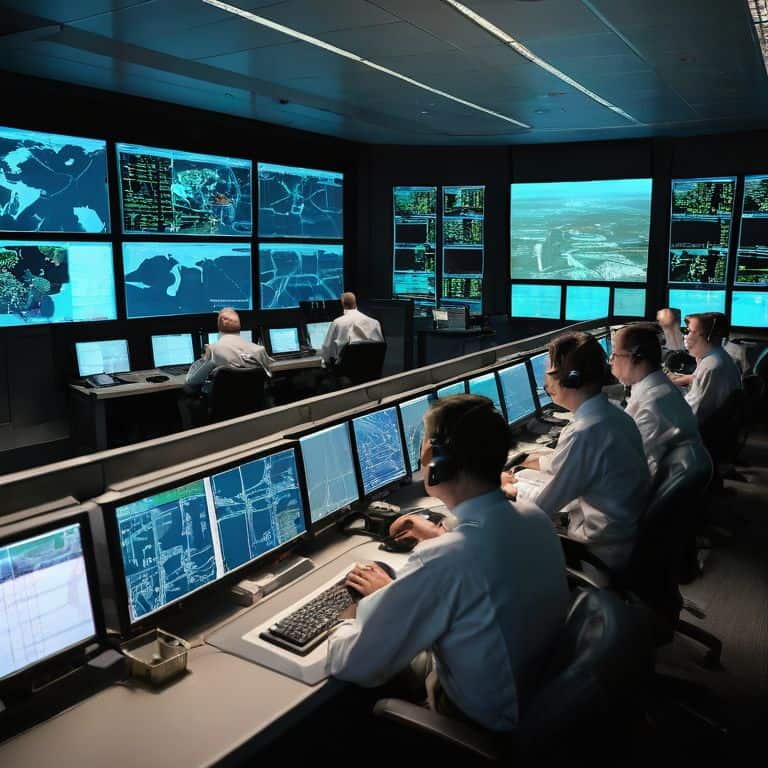
As I reflect on the advancements in remote air traffic control towers, it’s clear that we’re on the cusp of a revolution in aviation. From the evolution of virtual air traffic control systems to the success of the Single European Sky initiative, the digital transformation of our skies is well underway. By streamlining operations, reducing costs, and enhancing safety, remote air traffic control towers are poised to play a vital role in shaping the future of flight. Whether it’s through the implementation of NextGen air traffic control efficiency or the development of digital airport infrastructure, the possibilities are endless.
As we look to the horizon, it’s exciting to consider the potential of remote air traffic control towers to redefine the flying experience. With their ability to increase efficiency, reduce delays, and improve safety, these innovative systems are sure to have a profound impact on the aviation industry. As someone who’s passionate about the unseen logistics that make flight possible, I’m thrilled to see the progress being made and can’t wait to see what the future holds for remote air traffic control towers and the next generation of flyers.
Frequently Asked Questions
How do remote air traffic control towers handle emergency situations or unexpected changes in air traffic?
In emergency situations, remote air traffic control towers leverage advanced software and real-time data to quickly respond and adapt. Automated systems alert controllers to potential issues, while high-definition cameras and sensors provide unparalleled visibility, enabling swift decision-making to ensure safe outcomes.
What kind of training do air traffic controllers receive to work effectively in remote tower environments?
Air traffic controllers undergo specialized training to work in remote tower environments, focusing on virtual interface management, data analysis, and simulated scenario practice to ensure seamless control and communication with pilots, even from a distance.
Can remote air traffic control towers be integrated with existing air traffic management systems to create a seamless and efficient flight operation process?
I firmly believe that remote air traffic control towers can be seamlessly integrated with existing systems, enhancing flight operations. By leveraging advanced software and data exchange protocols, these remote towers can communicate effortlessly with current air traffic management systems, streamlining the process and improving efficiency.
